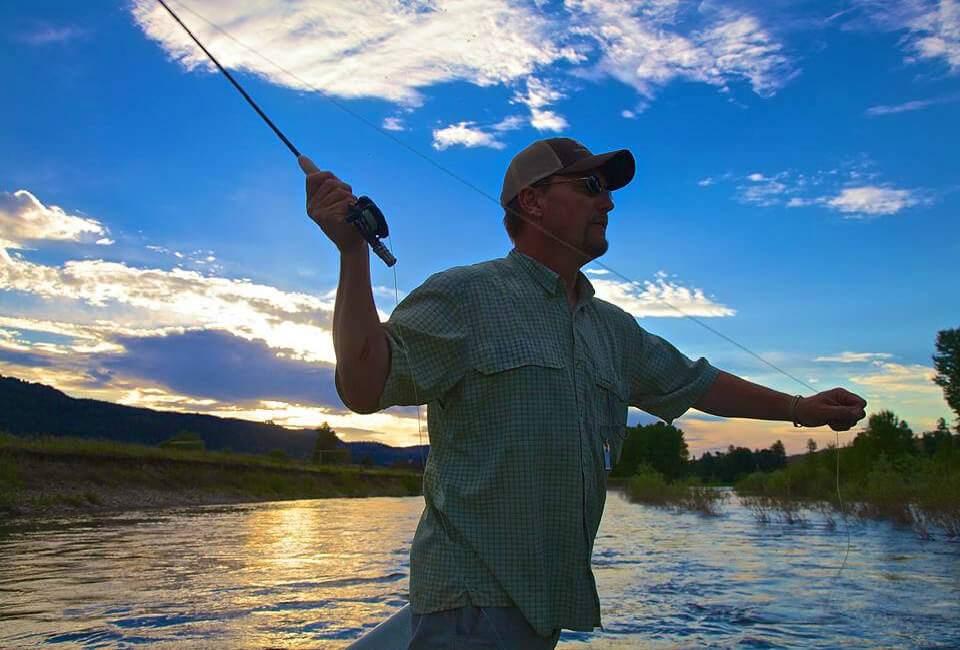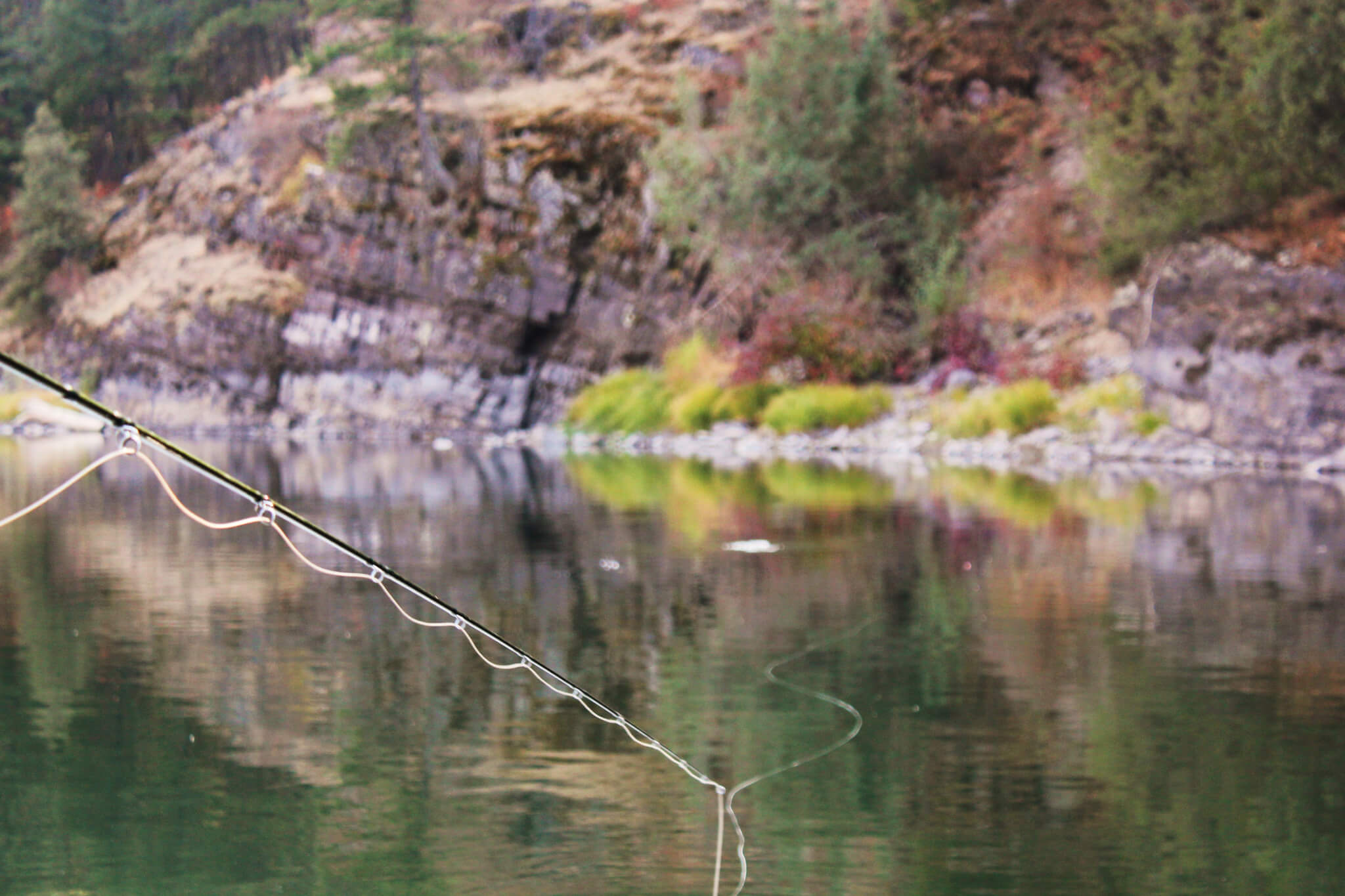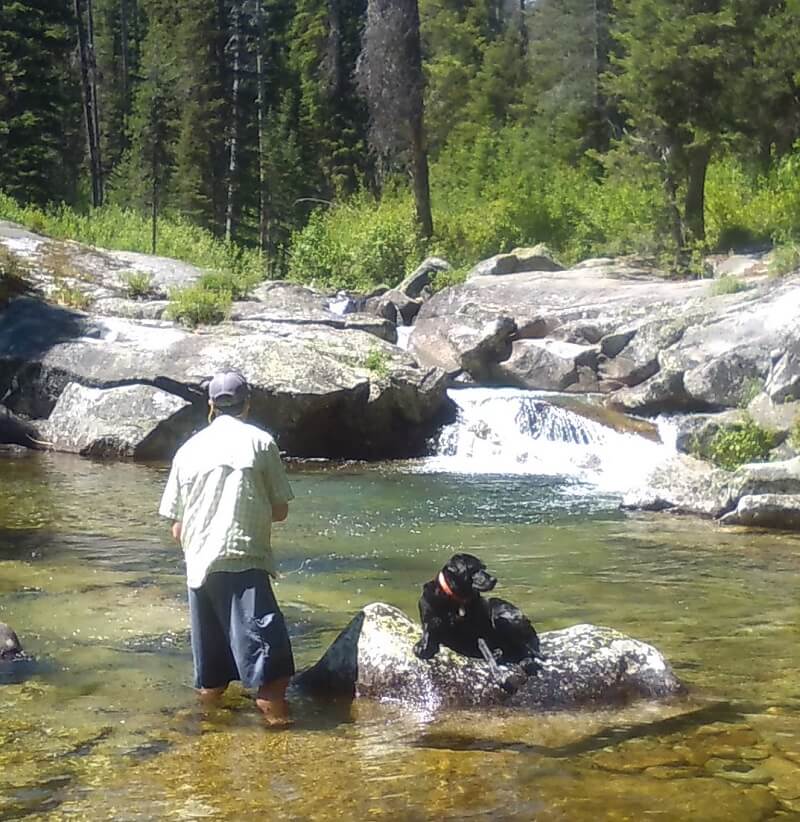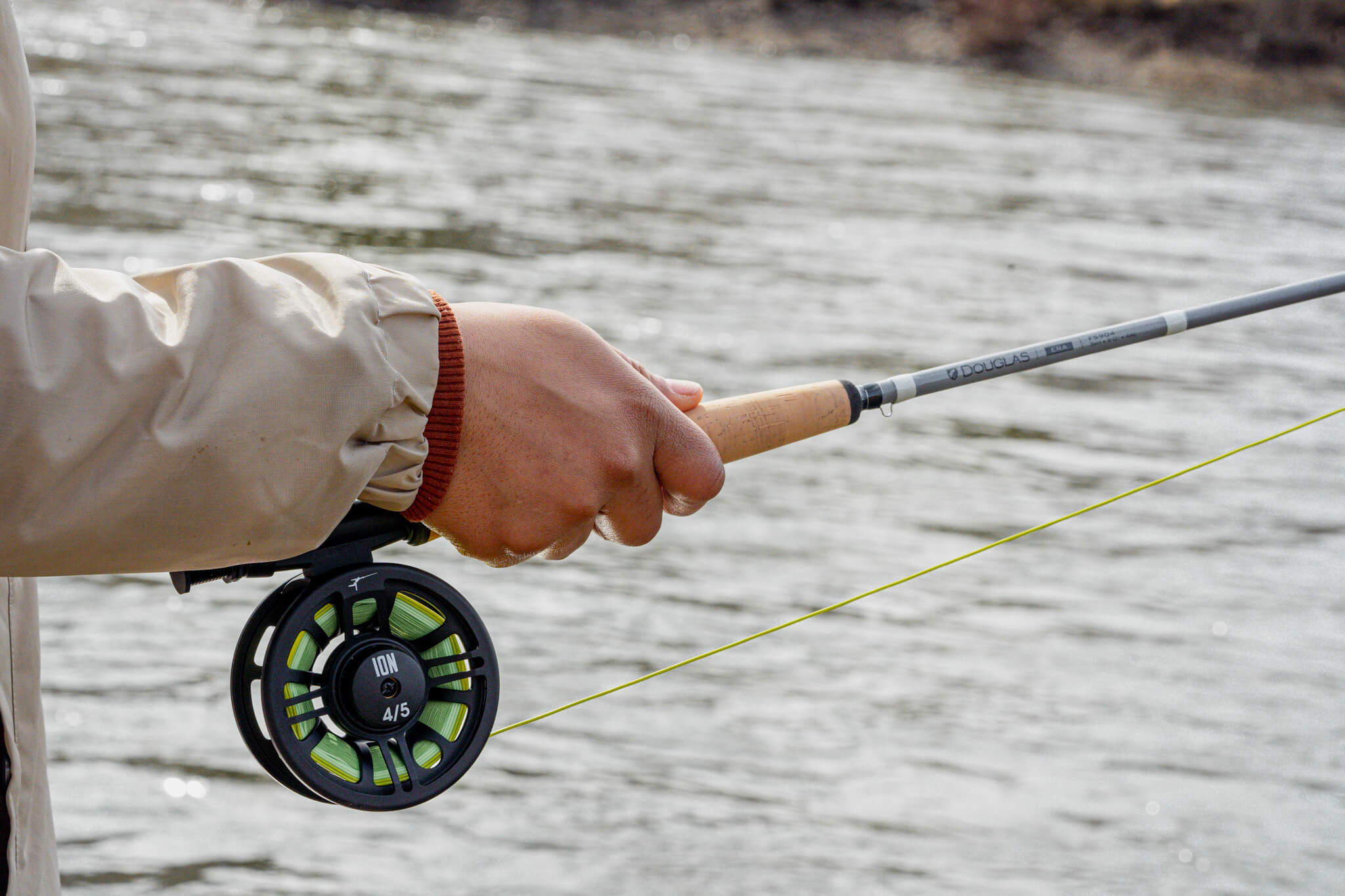Physics Of Fly Casting
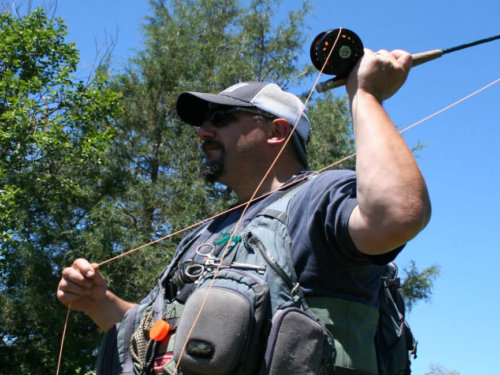
Geez, you say physics, and the world panics. Don’t worry, we don’t know enough about physics to get technical! It’s a way of understanding what might be happening when you are learning how to cast a fly rod. If you’re a physicist reading this- so sorry!
OK, you got a tool. That’s the fly rod. Tools help store and utilize energy. This tool needs a force to work against. That’s the weight of the fly line.
Once the tool is loaded with energy, the energy has to go somewhere. The line and leader are the energy conduits.
See, that was easy!
The fly rod is part lever, part spring. When you wiggle it, your arm puts energy in the rod. The harder you wiggle, the more energy goes in. This is called loading the rod. But unfocused energy isn’t worth much. You need a controlled wiggle (cast) that controls and directs the loaded rod.
The rod loads working against two separate forces. The first force loading the rod is fly line weight. This weight is variable with the length of fly line extended- less line applies less force, while more line extended applies more force. The other force working on the rod during casting is the static energy supplied by firmly holding the other end of the line near the handle. For practice, many tuck the line under a finger to supply a static force. When fishing, the left hand controls how this force is applied.
When talking about the physics of casting, we focus on the tip of the fly rod, because the rod has to follow the tip. The rod tip transmits the energy from rod to line. The tip travels two directions during the cast- horizontally and vertically (forwards and backwards, up and down). As the tip travels horizontally and vertically, it stays in plane. The plane can be at any angle to the body, but the rod must stay in plane. Imagine a tight clothesline, then imagine the rod during the cast never losing contact with the rope. That’s a fly rod staying in the same plane.
The energy stored in the rod is directed by two factors. The direction the tip is traveling, and how firmly the tip stops at the end of the front or back cast. Tip direction is aim. The firm stop focuses the energy in the tip’s direction. The load is shown as the bend in the rod. The more the rod bends, the more energy is stored. The firm stop allows the rod to unload in a fixed direction. A drifting stop un-focuses the energy.
This is where the phrase 10-2 comes into play. 10-2 is based on the clock face, and defines where the rod stops and start during the cast. For the front cast, the rod tip travels in a straight line from the 2:00 o’clock to the 10 o’clock point. The back cast is 10:00 to 2:00. Not following the arc of the clock face, but in a straight line between those two points. When you stop the rod, the energy is directed through the line in the direction the tip was traveling before the stop. If the tip of the rod follows an arc, the line does as well, creating a very inefficient transfer of energy.
The line follows the path the rod tip traveled. You know you followed the correct path when the line goes in the direction you aimed it. The fly line never lies! If it’s not going where you want it, you’re not directing the energy correctly with the tool.
The line follows the path the rod tip traveled during the moment of acceleration. The fly line never lies. WHEN you practice casting, you’ll learn to watch the line roll out, forming the front or back cast. The shape the line follows is called the loop.
Depending on the rod tip’s path, the loop may be very narrow, very wide and all points in between. The narrower the loop (less space between the top and bottom line) the more energy efficient the cast. Wide loops are less efficient, and don’t travel as far. The loop is defined by the distance the rod travels in the vertical plane (up and down) as the tip is accelerated. If the line is straight traveling from 10-2, then the loop will be narrow. If you follow the arc of the clock face (incorrect) the loop will be much wider and less efficient. The loop size shows you the path the rod tip traveled in the vertical plane.

When a wide loop is good
While wide loops aren’t always efficient, it’s good to know how to make one. When you have a tiny dry fly on the end of your leader, a tight loop will get your fly out very well. But think about the time you might have an indicator, two large nymphs and some lead weight on your leader. That tight loop is going to collapse due to gravity, tangling your line during the cast. You’re not really casting that double rig all that far, so efficiency isn’t critical, but not tangling is critical. If you understand how to form a wide loop, the flies will get to their destination, untangled and ready to go. Knowing how to be efficient allows you to be the opposite if needed, and that can save you some problems in certain situations.
Once the cast is finished and energy delivered from rod to line, no more energy can be added. The energy is finite, and starts dissipating the moment the rod tip stops accelerating. Energy dissipation comes from moving the line, friction and other physics based energy uses we don’t understand.
We do know this. The thicker and heavier the line, the more energy it absorbs and carries from the rod. An 11 weight line holds and transfers more energy than a 4 wt line, due to the difference in diameters and weight. This is why larger line weights cast further and carry bigger bugs- the wider diameter carries more energy. (There’s also some momentum stuff, but lets not break the flow!)
Once the energy in the cast is dissipated, the line stops extending. Hopefully it’s fully extended!
To help with the fly line and leader’s full extension, manufacturer’s taper the end of the fly line and the leader. The fly line is uniform in diameter for about 25-40 feet, then tapers down to a smaller diameter at the end of the line. The thick to thin tapering focuses the energy in the line, and allows it to travel further.
The leader is also tapered. The thick end is attached to the fly line, in order transfer the line’s energy more easily. The leader continues to narrow and focus the energy until the leader straightens out and presents the fly. The tapering allows the energy to travel further than had the line been of uniform diameter.
Think of the line and leader tapers as extended funnels, ever narrowing and focusing the energy into a thinner outlet, where it exits with more force.
Is there more to it than this? Of course! But for right now, all you need to know is the rod stores the energy. The rod loads against the weight of the fly line. The rod is in the same plane through the cast. The energy is sent into the line, and once sent, you can’t get any more. The loop is defined by the distance the rod tip travels vertically in the casting plane. In order to maximize the finite energy, the lines and leaders taper, focusing the energy for additional distance.
Simple as that!
